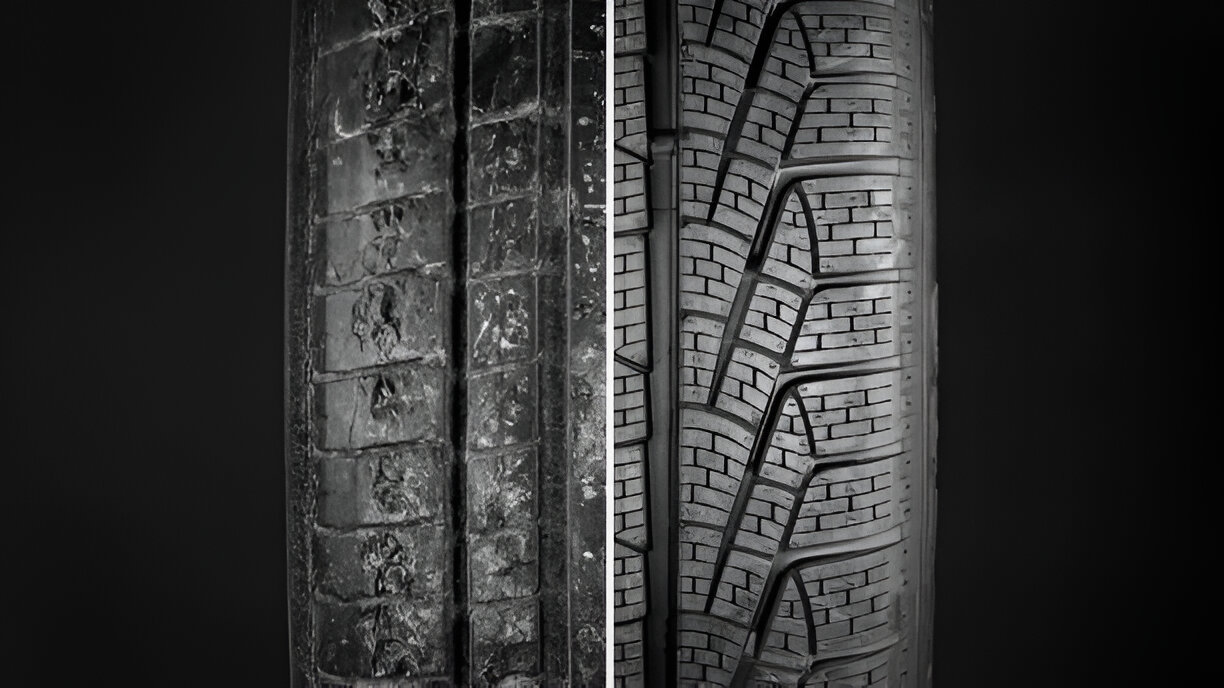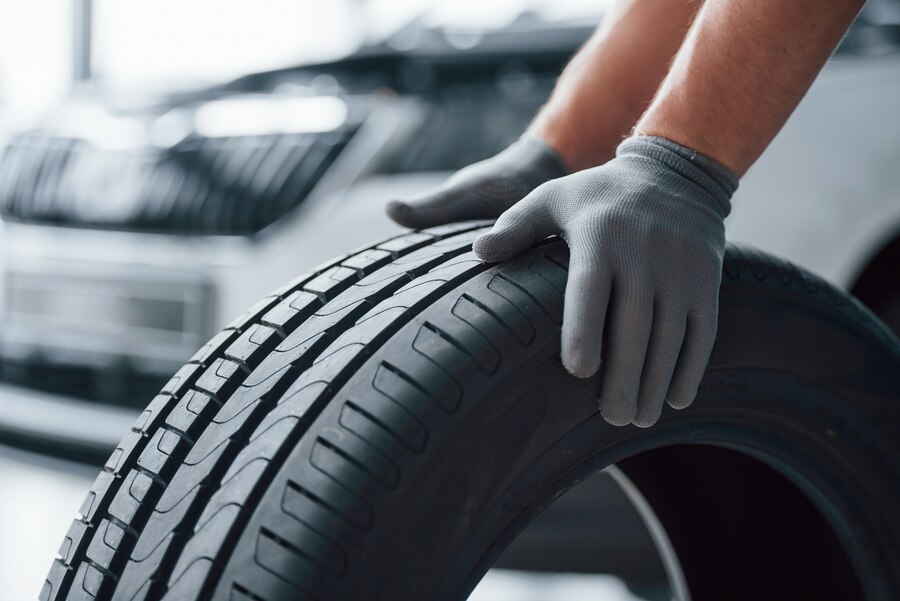Last Updated on July 21, 2024
Demystifying UTQG: How It Influences Your Tire Choices
We just compared Tread Life Warranty as a factor for getting the best deal on your next set of new tires, but this is not the only factor. You might also find that the tire you shop for does not have a stated Tread Life Warranty. If this is the case, check out the UTQG (Uniform Tire Quality Grading) code for the tires; you can detect quality differences here.
While this code was developed into a standard to help consumers compare tire performance, it is rarely factored into the buying decision. However, attention to details like this can help consumers detect differences that could save them lots of money.
Understanding UTQG: A Guide to Tire Ratings and Performance
In the vast world of tires, a three-letter acronym often pops up but remains a mystery to many: UTQG. It stands for Uniform Tire Quality Grading, a standardized system introduced by the U.S. Department of Transportation to guide consumers in their tire purchases. So, what exactly is UTQG, and how does it influence how we choose tires? Let’s delve into the details.
What is UTQG?
UTQG, or Uniform Tire Quality Grading, provides consumers with valuable information about tire treadwear, traction, and temperature. By understanding these grades, drivers can make more informed decisions when buying tires, ensuring they get a product that matches their needs and driving conditions.
- Treadwear: This numerical score indicates how long a tire’s tread is expected to last. A higher score means the tire tread should wear slower than a tire with a lower score.
- Traction: Represented by letters ranging from A.A. to C, this indicates a tire’s ability to stop on wet surfaces. A.A. is the highest rating, followed by A, B, and C.
- Temperature: Graded from A to C, this represents the tire’s resistance to heat and its ability to dissipate heat. A is the highest rating, indicating the tire withstood a higher speed before failing the test.

Why Should You Care About UTQG?
Understanding UTQG ratings helps you make an informed decision about the longevity and safety of your tires. While it’s just one factor, it offers a standardized measure to compare various tire brands and models.
For instance, if you frequently drive on wet roads, you might want to prioritize a tire with an A.A. traction rating. A tire with a higher treadwear rating could be a better fit if you’re aiming for longevity.
However, it’s essential to remember that UTQG is based on controlled tests, and real-world conditions might vary. Driving habits, road conditions, and vehicle weight can influence tire performance.
Deciphering UTQG Ratings: A Guide to Treadwear, Traction, and Temperature in Tires
This code of standards allows consumers to compare treadwear, traction, and temperature ratings on any tire purchased in the U.S. The treadwear grade is a way to compare the expected life of the tire. While this is just a grade and not a rule, due to the variance in drivers and driving conditions, it serves as a good comparison between tires.
If one tire you are looking at has a treadwear grade of 200 and another has a treadwear grade of 400, based on tests conducted under the same conditions, the tire with the 400 grade will last twice as long as the 200-grade tire. The traction grade measures the tire’s capacity to stop in wet driving conditions.
The highest to lowest grades are A.A., A, B, and C. A tire with a high traction grade of A.A. will stop in wet conditions sooner than a tire with a B traction rating. The higher the rating, the better the stopping capability on a rainy day.
The last grade is for temperature, indicating a tire’s resistance to heat. The higher the grade (A), the better the tire can handle heat, like when driving long distances under hot driving conditions. The grades are A, B, and C.
Pay attention to the specifications of your next set of new tires, and you will not only save money but also ensure that the tires you purchase are best suited for your driving needs.
The Role of Tires Easy in Your UTQG Understanding
At Tires Easy, we believe in empowering our customers with knowledge. We provide detailed UTQG ratings for every tire in our catalog, making comparing and contrasting different models easier.
Moreover, our tire experts can help you interpret these ratings and suggest the best tires for your vehicle, ensuring safety, performance, and value for money.
Conclusion
While UTQG ratings might initially seem complex, they are crucial in guiding your tire purchases. You can choose tires that align with your driving needs and conditions by understanding these grades. And remember, a well-informed decision leads to safer drives and better tire longevity.
In the realm of tires, UTQG serves as an invaluable tool for discerning consumers. By understanding the intricacies of the UTQG ratings, buyers can make informed choices that align with their specific driving needs and conditions. Whether you prioritize tread life, wet traction, or heat resistance, the UTQG system ensures brand transparency and comparison.
Remember to factor in these ratings to maximize your investment as you gear up for your next tire purchase.
Ready to find the perfect tire with the right UTQG rating? Visit Tires Easy to browse our extensive collection and grab the best deals today!
FAQs
What is a good UTQG tire rating?
A “good” UTQG rating varies based on individual needs. However, a higher number for treadwear generally indicates a tire that may last longer. An “A.A.” rating is the highest for traction and denotes optimal wet traction. Lastly, an ” A ” temperature rating indicates the tire’s superior ability to dissipate heat.
What are the three ratings in the UTQG?
The UTQG system comprises three primary ratings:
- Treadwear: A numerical score predicting the tire’s relative lifespan.
- Traction: Grades (A.A., A, B, C) reflecting the tire’s wet stoppage performance.
- Temperature: Grades (A, B, C) indicating the tire’s resistance to heat generation at high speeds.
What does UTQG 720 AA mean?
In the UTQG rating “720 AA,” the “720” represents the treadwear rating, suggesting that the tire should last 7.2 times longer than a reference tire graded at 100. The first “A” stands for traction performance, with “A.A.” being the highest grade, indicating excellent wet traction. There’s no temperature grade given in this example, but if it were, it would follow the traction grade.
What are the traction grades for UTQG?
The UTQG traction grades, from highest to lowest, are “A.A.,” “A,” “B,” and “C.” These grades reflect the tire’s stopping capability on wet surfaces, with “A.A.” being the top performance grade.
While UTQG offers valuable insights, other factors, and real-world reviews should also be considered when selecting tires for your specific needs.
-
Writer












